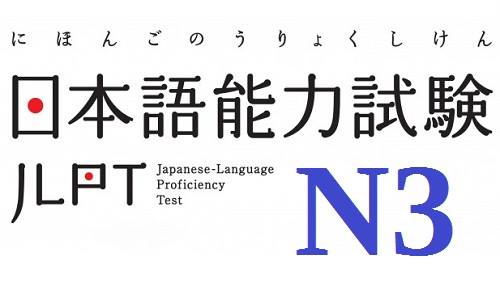JLPT N3 Grammar lesson 2
JLPT N3 Grammar lesson 2. Hi everyone! In this article, Learn Japanese daily will introduce you to the JLPT N3 Grammar.
Let’s take a look at the next 5 structures.
Structure 6 :
Vてとく:
Vておく→Vとく
Vでおく→Vどく
Vておかない→Vとかない
Explanation:
To do the action V in advance to prepare for something.
For example:
仕事に行く前にお弁当を作っておく。
Shigoto ni iku mae ni obentou wo tsukutte okimasu.
I make a lunch box before going to work.
明日は友達が来るから、部屋を掃除しておかないといけない。
Ashita wa tomodachi ga kuru kara, heya wo souji shite okanaito ikenai.
My friends will come tomorrow, so I have to clean the room.
Structure 7 :
N/Aい/Aな/V普+みたいだ/みたいに/みたいなN
V普:Vる、Vない、Vた、Vなかった
N普:Nだ、Nではない、Nだった、Nではなかった
Aい普:Aい、Aくない、Aかった、Aくなかった
Aな普:Aだ、Aではない、Aだった、Aではなかった
Explanation:
Seems like, feels like, sounds like:
To show the speaker’s guess, judgement. Rashi is used to show equal comparison. Like otokorashi: like a boy (N1 = N2). Mitai is used to point out a similar quality.
For example:
あなたの部屋は図書館みたいだ。
Anata no heya wa toshokan mitai da.
Your room is like a library.
この店はガラス瓶みたいなものを売っている。
Kono mise wa garasubin mitaina mono wo utte iru.
This store sells things like glass bottles.
夢を見ているみたいだ。
Yume wo mite iru mitai da.
It looks like I’m having a dream.
あの雲は城みたいに見える。
Ano kumo wa shiro mitai ni mieru.
That cloud looks like a castle.
Structure 8 :
Nらしい
Explanation
Exactly like, just like
To emphasize a certain quality of the noun.
For example:
私は男性らしい服が好きです。
Watashi wa danseirashii fuku ga suki desu.
I like masculine clothes.
Structure 9 :
Nっぽい
Explanation:
To look a little like N.
To give judgement
Normally goes along with bad judgement.
To have the propensity to talk about the characteristics of a person.
About color: To have that color, have a shade that is similar with that color (view example 2)
A lot of (water, oil – cooking).
For example:
うちの息子は大人っぽいです。
Uchi no musuko wa otonappoi desu.
My son likes an adult.
私は黒っぽい車を買いました。
Watashi wa kuroppoi kuruma wo kaimashita.
I bought a blackish car.
私は男っぽい女が好きです。
Watashi wa otokoppoi onna ga suki desu.
I like masculine women.
今日は油っぽい料理を作りました。
Kyou wa aburappoi ryouri wo tsukurimashita.
I cooked oily food today.
Structure 10 :
Vる/Vない+ようにする
Explanation:
To put effort into doing something, pay attention to something in order to…
For example:
人の悪口を言わないようにする。
Hito no waruguchi wo iwanai you ni suru.
Do not say bad things about others.
川にごみを捨てないようにしてください。
Kawa ni gomi wo sutenai you ni shite kudasai.
Please do not throw garbage in the river.
Above are the JLPT N3 Grammar lesson 2. If there is anything that you find it hard to understand, feel free to common below.
Check out other JLPT N3 Grammar lessons in section: JLPT N3 Grammar